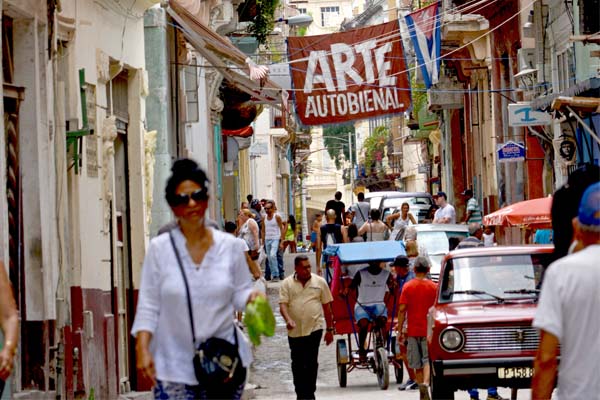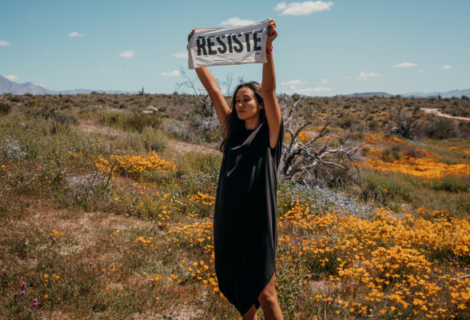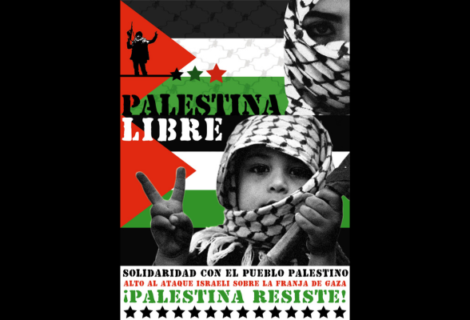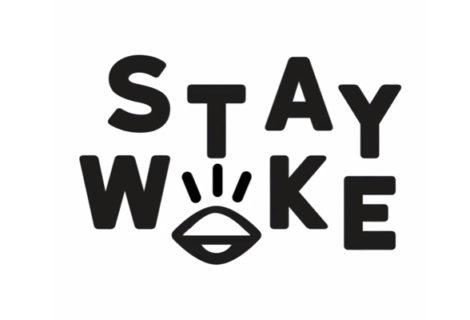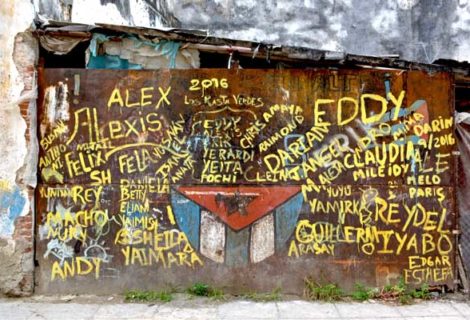A Phoenikerx’s Guide to Cuba
Before traveling to Cuba this month we had tons of questions. A couple of our friends had gone relatively recently so we were able to compile a hodgepodge of answers that helped us through the trip. So you don’t have to be scrambling for information from different sources, we decided to create a guide for anyone who wants to visit this amazing country.
First, here’s a brief update on Trump’s new Cuba policy since it’ll make it a bit harder for Americans to go (don’t panic, it’s still possible). In lay terms, his new policy no longer allows us to just book a flight and head on to the island. If we want to go there, we now have to do it through group travel, meaning we have to go through some kind of tour agency in the Unites States, which will create a detailed itinerary for us and we have to follow it to the T.
One thing you have to know though is that if you booked your travel, or did at least one travel transaction, such as booking your hotel or flight, before June 16 (when Trump announced his changes) you can go on your trip as planned.
Another thing you need to know is that the policy changes don’t go into effect “until the new regulations are issued,” according to the Treasure website, and that is going to take a few months. That technically means you can still book a flight, get the crap out of here and head to Cuba while you can. The reality is that everyone is scrambling to figure out what Trump’s policy changes will do and while that happens, you can hang out in good ol’ Havana (or any other place in the country you want to visit) and spend your hard earned dollars however you want.
All that being said, this guide is for those who have already booked travel to Cuba and for those daredevils who will take their chances and go there before the new regulations are announced.
Let’s start with what you need to know about getting there…
For now (until new regulations are announced) you can fly to Cuba from the U.S. For Phoenikerxs, there are a few alternatives:
- Fly from La Phoenikera to Cuba with one or two layovers.
- We got a super cheap flight from L.A. for under $400 (much cheaper than any of the flights from Phoenix at the time) so we decided to drive there and catch our flight. Another reason for our decision was that when we booked our flight, if you flew from La Phoenikera, all flights had a layover in Charlotte of 17 hours! Flights are much cheaper now and layovers are not as crazy last we checked, so it makes sense to fly from Phoenix.
- If you’re’ kind of iffy about traveling from the U.S., do what Americans have been doing for ages and go to Cuba through Mexico.
You will need a visa to travel to Cuba. This sounds scarier than it is. You can purchase the visa at the airport for $100. The airline will send you an email in advance of your trip telling you how you can buy the visa online but it’s more expensive that way, don’t do it. You will be able to purchase the visa at your last layover. We had a layover in Charlotte, SC and the visa kiosk was right next to our gate. Buying it was super quick and easy.
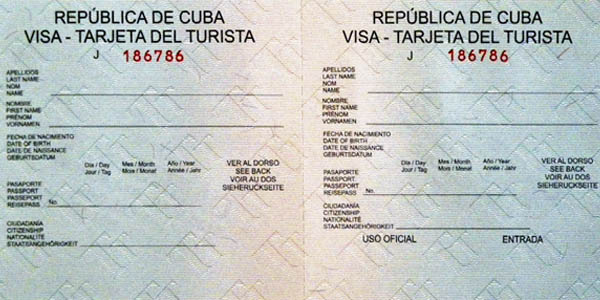
This is the visa you fill out before boarding your plane to Cuba.
When you check in at the airport, you’ll go through the process of “explaining” why you are traveling to Cuba. The reason for your travel has to fit under one of 12 categories (family visits, official government business, journalistic activity, professional research and professional meetings, educational activities, religious activities, public performances, athletics and other competitions, support for the Cuban people, humanitarian projects, activities of private foundations or research or educational institutes, exportation/importation of information, certain export transactions). The current reality is that your travel fits pretty much under any of these.
When you get to Cuba, going through customs is just the same as in any other Latin-American country.
Lodging
What Trump said on June 16 is that he doesn’t want our dollars to benefit Cuba’s military (the state really). Most businesses, including hotels in Cuba belong to the state, it being a socialist country. Your safest bet for lodging, under the new policy is staying at an AirBnB or a Casa Particular. We would recommend that anyway, that way you’re actually helping the Cuban people and not their government.
You can get an AirBnB in Cuba. You can rent entire apartments for as cheap as $30 dollars per night. This is highly recommended if you’re traveling in a group because you’ll end up paying about $5 dollars per night per person. Because it’s so cheap, it’s also recommended if you’re going as a couple and you just want to have access to a kitchen, living room and other things all for yourselves (hanky spanky all over the house anyone?).
The cheapest lodging is through a Casa Particular, which is practically someone’s home and they rent you a bed or a room. A lot of these have private rooms and you pay as cheap as $8 dollars per person, which is what we paid. You can book these through hostels club . When you book through them, you pay a $2 dollar deposit online and the rest you pay there.
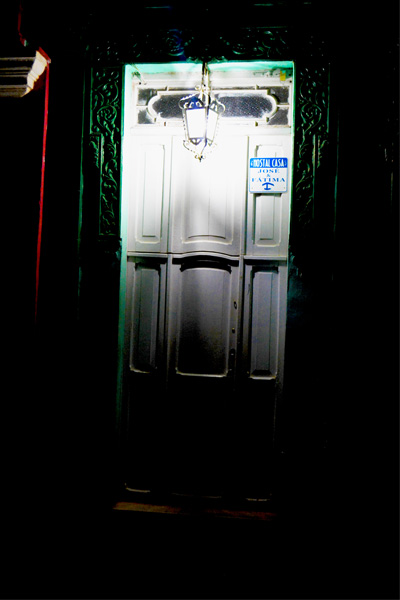
You’ll see a symbol like the one on this door on many homes. This means they are a Casa Particular and you can rent a bed or a room.
From the airport to your hotel, casa particular or whatever lodging accommodation you chose…
The cost of a taxi from and to the airport is $25 – $30 dollars (we’ll explain the money in a bit). The way to get the best fare is to call the price. Find a taxi and say that you want to pay $25, then negotiate.
We paid $30 from the airport to our hostel and our host told us we could have paid $25. We paid $25 for the one that took us back to the airport because we called the price.
Note, I’m calling them dollars up to this point for a clear spending reference but you’ll have to pay in Cuban money. No one will take your dollars in Cuba.
Money
The first thing you have to know is that you can’t use an American card to get money from an ATM so you must take all the cash you think you’re going to spend and a little bit more for whatever might happen.
The second thing you have to know is that it’s better to take Euros. The dollar is penalized in Cuba so you lose about 13 bucks per $100 you exchange. That might not seem like a lot but it is once you’re there. Do not make the same mistake. I repeat…Take Euros!
You can exchange your money at the airport but there is always a long line. Just tell your taxi driver to take you to a CADECA (the institution that exchanges currency) or a bank before taking you to your lodging place. Banks and CADECAs are state institutions so the exchange rate is exactly the same. Lines tend to be shorter at CADECA and you’ll need your passport to exchange money.
We recommend budgeting about $100 per day per person just to be safe. If you share plates, you’ll have tons of money left over. Also, you don’t have to exchange it all at once. You can measure how much you’re spending and decide that way how much you need. If you exchange too much, you can always exchange it back IN CUBA.
There are two types of currency in Cuba, CUC and CUP. The CUC is tourist currency. Once you’ve exchanged your money it’s easy to round up and consider a CUC a dollar.
Once you have exchanged your money to CUCs, we recommend you exchange about 40 CUCs into CUPs which is the local currency. You will get anything from 23-25 CUPs per CUC. There are a few reasons why this is practical:
- When you go to the bathroom, most of the time you have to pay (amount is at each person’s discretion). It’s better to give 1 or 2 CUPs than 1 or 2 CUCs (dollars) every time you go to the bathroom.
- If you get on the wawa (the bus), it costs 1 CUP per person. It’s good to have CUPs for this or you’ll end up paying whole dollars for this too.
- There are areas that are not as “touristy” where you’ll find places to eat that charge as little as 1 CUC (1 dollar) per meal or 25 CUP. If you only have a 10 CUC bill for example, they’ll probably have a harder time giving you change.
A note about this…when you exchange CUCs to CUPs, ask the bank to give you coins as well (for the wawa and the bathroom)!
How do you tell the different currencies apart? Tourist bills say “pesos convertibles” on them and they are glittery.
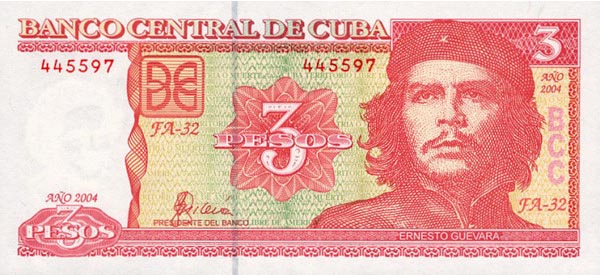
This is a 3 CUP bill…local currency. This doesn’t get you much in a touristy area and will buy you like three espressos where the locals hang.

These are 3 CUC (3 dollars). You can buy a delicious appetizer with this, three or four large bags of cookies or two beers.
Cuba is incredibly cheap. Like I said, there are places where a meal costs one CUC (one dollar). That’s generally where other Cubans eat and not many tourists go. In most places where tourists eat, a meal costs about 4 – 6 CUC (four – six dollars) for pork, chicken or fish. If you like lobster, you’ll probably pay around 10 – 12 CUC depending on the place.
Beer is 1.25 – 1.50 CUC and mojitos and other cocktails are 3 CUC. We only went to one place that charged 2.75 per beer but people drinking there were being ripped off. Especially because they sell beer on the street for the regular price. You can easily get a beer buzz for less than 10 CUC and head to a highly touristy and pricey bar/club if that’s your thing, and yes, you can drink on the street.
The first day there…
We’re not gonna lie, the first day is a culture shock. Living in the U.S. and being from Mexico, I’m used to there being mini-markets in most corners and street food everywhere. It’s not like that in Havana. There are not that many stores and some of the ones you find are only for Cubans.
Don’t freak out. Just keep this in mind and know that you will find what you need. To stock up on water the first day, which we recommend, ask your host where the nearest store to buy water is.
If you go to a regular store, you will pay 1 – 1.50 CUC (sometimes less) for a large water bottle. If you buy water at a restaurant or other similar place, you’ll pay that for a small water bottle. We recommend you just buy big ones and plenty of them.
We spent the whole first day overpaying and figuring out how to find the things we needed, and we were fine with that. Hopefully, these tips will save you some hassle.
Internet
As a tourist, you have to get a tourist internet card. Don’t buy this from anyone on the street as there will be people who offer. You buy the Nauta cards at official ETECSA stores. ETECSA is the carrier…the Cox Communications if you will. A card that lasted 5 hours cost us 7 CUC (Internet is charged by the hour, not data use). Once you have the card, you can use it at any place where there is WiFi. ETECSA closes at 5 p.m. or earlier so take care of this early in the day so you don’t have to worry about it.

The back of a Nauta internet card. If you go before November, hit us up to get it from us since it expires in December (the date format in Cuba is Day/Month/Year).
There are many places with WiFi. The majority of the ones we saw were parks and they are easy to spot because you’ll see people’s heads in their phones, which you don’t see anywhere else. A girl we met called them Zombie Parks. If you’re a planner and want to know where those spots are before going, you can find them here .
To be honest, it was refreshing to be disconnected that way. Throughout our stay, we really only went to the Zombie Park to let our parents know we were fine and what our next destination would be so they knew where we were at all times. The longest we were on the internet while in Cuba was to book a Casa Particular in Trinidad, another city we went to.
Eating
You will find tons of pizzas and “sandwich de jamón y queso” (ham and cheese sandwiches). Actually, this last one will save you everywhere you go. Most street food places offer these two options. If you want to eat “Cuban food”, your best bet is going to a conventional restaurant or a paladar, which is a smaller place, owned by families as opposed to owned by the state. You can find tons of lists online that tell you where to eat.
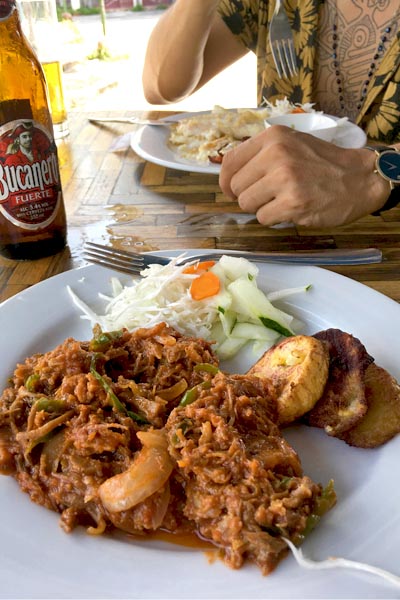
Ropa Vieja was one of our first meals. Bucanero beer is Cuba’s darker beer. Most places run out of it pretty quickly.
A note to be in line with Trump’s new policy is that your safest bet is to eat at Paladares because they are privately owned. Most established restaurants belong to the state.
The place where we saw the most paladares and places to eat was Vedado, a newer part of Havana, and La Habana Vieja.
Two of the best recommendations we got from friends who had been to Cuba were “take some canned tuna” and “eat when you can.” We took a couple of canned sardines and we took them everywhere, just in case we were outside of Havana and weren’t able to find food.
The “eat when you can” part was huge. Anything can happen when you’re in Cuba. A restaurant might have methane gas issues and close early (which happened to us), or your bus might break down in the middle of nowhere, where food is not so readily available (also happened to us).
Since we wanted to take advantage of every minute of every day there and see as much as we could, we planned when and where we were going to eat. On the days we went to the beach, we had breakfast at La Francesa a little restaurant in front of the park where we took the bus and bought sandwiches to take with us so we didn’t have to leave the beach to eat. We had dinner when we got back.
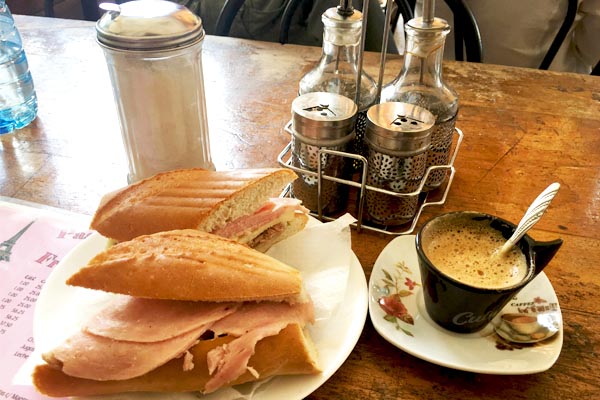
Our second Cuban meal was a Cuban sandwich and café cortado…obvi!
I would recommend to buy a big bag of galletas de mantequilla (cookies), you’ll find them in a lot of places. When you get hungry, these will hold you until you find a place to eat. My travel buddy thought the bag of cookies was annoying to carry but he wasn’t annoyed at eating them!
Café Cortado
You must have café cortado (Cuba’s emblematic coffee) every day you’re there. Most restaurants and paladares have it. We went to Café Arcangel in La Habana Vieja, which is deemed the best coffee in the city by Facebook voters. It was. But not only that, the place is kept as an antique so every artifact you see in there actually works.
As if that wasn’t enough, the owners are the sweetest! We went there on our last day, saw them through the window and they said it was closed. We told them we were there to have our last cafecito cortado of the trip and they said “Bueno, si es así, entren,” and they served us. We drank our coffee, they counted the money of the day and everyone talked to us as if we were family. You must go there. Oh! They also have a Casa Particular, which we think would be worth staying in.
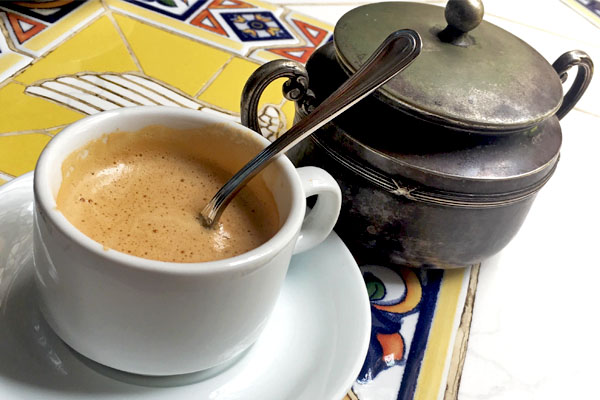
Best café cortado ever!
Public transportation in Havana
There are a number of public transportation options in Havana. The word you’ll hear most when you’re there is Taxi! Everyone wants to take you to your destination. Most taxis (or máquinas) are older cars so you’ll get that experience no matter what. There are also official taxis, which are newer yellow cars; you’ll probably pay more for these and the reggaeton won’t be as raunchy-licious.
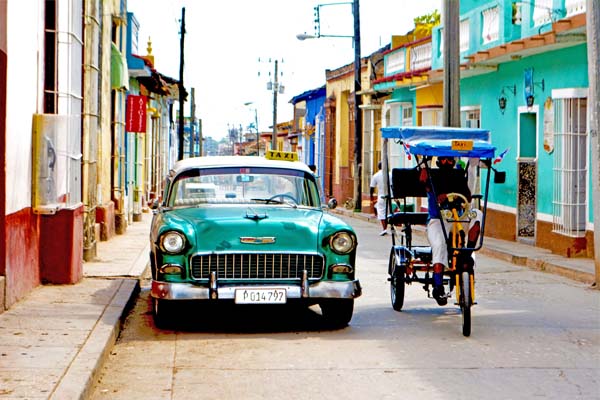
Two types of Cuban taxis up in here.
There are also bici-taxis, which are similar to the Pedicabs you find in downtown La Phoenikera.
We recommend you have coins so you can take the wawa or bus (again, 1 CUP per person, which is hella cheap!). If you don’t know how to get to where you’re going that way, ask the crowds of people at any given stop. If you don’t speak Spanish, stick to taxis or ask your Casa Particular host which bus you can take to your destination.
We personally walked everywhere because we wanted to soak it all in and see what the city and the people were like. As I mentioned before, we were centrally located in Centro Habana, so we could get to La Habana Vieja (Old Havana) and Vedado in the same amount of time.
If you plan to do the same and walk everywhere, take comfortable walking shoes! Sandals/flip flops don’t count, you’ll tear up your feet pretty quickly, as did I. We wore tennis shoes the whole time. Ladies, if you want to look cute and at the same time walk everywhere, take tennis shoes that will look good with your cute outfits.
Traveling within Cuba
Most things are very accessible in Havana. You can go to Playas del Este, which are beaches half an hour away from Havana on a pretty fancy bus for 5 CUC per person round trip. They give you a ticket and you can catch that same bus any time until 6 p.m. It runs every 45 minutes. Playas del Este attract some tourists but more Cubans so if you like hanging with the locals, this is the spot. Cubans seem to go to the beach every day!
If you happen to miss the bus, which happened to us the first day, you can talk to a few tourists and easily grab a taxi that’ll cost 5 CUC per person (one way only though).
If you want to leave the beach later than 6 because hello, sunset is at 8 or beyond, you can easily get back on a taxi that’ll charge you about 5 CUC to take you back to Havana. We paid 5 CUC one night and 4 CUC the second night to get back (for 2 people, not each). These are collective taxis so you’re traveling with other people.
To go to places that are farther away from Havana, which we recommend, there is a bus service specifically for tourists called Viazul. The station is in Vedado. We went to Trinidad (5 hours away), and that cost was 25 CUC per person. A ton of people go to Varadero (2 hours away) and that costs about 10 CUC per person.
For traveling outside of Havana, the same thing applies if a bus is full or you happen to miss it. There will be taxis at the station waiting to take groups of tourists to different places for the same price as the bus. You can do that too but do it at your own risk. Some cars are pretty old and you don’t know when they will break down. But eh, do whatever you want, our bus broke town too.
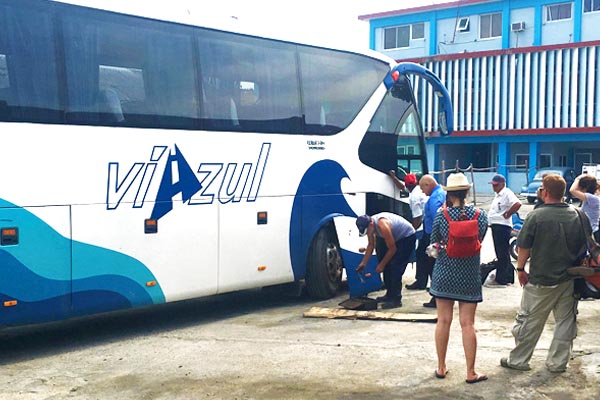
When our bus broke down, they tried to fix it for an hour before they called for another one to come get us. They fix everything!
What to take to Cuba
What to pack:
Cuba is hot and humid AF! Don’t take pants unless that’s your thing and you’re ok being kind of uncomfortable. Whatever you take, make sure you’re conscious of sweat marks because there will be plenty of that day or night. Do take a sweater or a blanket for long bus travel.
We say it’s really hot but the truth is that it’s not like a summer in La Phoenikera. Anywhere there is shade, there will be breeze, so you’ll find refuge from the blasting heat for sure. Be prepared to be hot most of the time thought because not every place you go will have a cooling system (actually, most won’t).
Again, take comfortable walking shoes because it’s worth walking to soak up the city.
You want to stay at an RBnB or Casa Particular that offers towells. We did and it was great. All we packed were our beach towels.
Cuba survival kit:
Here’s what we recommend you take so you’re as comfortable as you can be while in Cuba.
- Toilet paper. This will be your most valuable resource there, especially if you’re traveling to different places. We took toilet paper and little Kleenex packets. The Kleenex packets are practical because they are easy to carry everywhere and are not bulky.
- A few cans of tuna, sardines or your favorite canned snack. Although we didn’t necessarily have a hard time finding food, it gave us comfort that if anything happened, we’d be covered. Again, Cuba is not a place with convenience stores or fast food joints on every corner. If you’re in a super touristy store, there will be more but even then, it’s not that much.
- Munchies! If you have a sweet tooth or just like to snack on comfort food while on vacation, take those things with you.
- If you’re vegetarian, take plenty of dried fruits and nuts.
- You’ll be exposed to the sun most of the time and you don’t want to ruin your vacation by having sun burn blisters. Take plenty of sunscreen and protect yourself by wearing it every day even if you’re not going to the beach.
- You will cut yourself, you will get a blister. Something will happen, just like it will anywhere else and you want to make sure you can take care of yourself.
- Pills or remedies of all sorts. I always carry over the counter pain killers, Emergen-C, chamomile tea or other stomach medicine. My mom being hella Mexican, added vicks vaporub to my kit. It helped when I got a blister.
- Take condoms because pharmacies are not ubiquitous. You don’t want the calentura to catch you off guard.
Additional recommendations…
We recommend you stay in Centro Habana because it’s a central location and you get to places in 15-20 minutes walking. Staying in La Habana Vieja (Old Havana) is pretty neat because that’s the heart of the city. There you’ll have easy access to all things touristy if that gives you comfort. If you want to stay in a trendier place where there are a bunch of young people, Vedado is ideal.
If you choose a Casa Particular or hotel in La Habana Vieja or Vedado, don’t just stay in either of those places. Explore the city and get to know different areas and people. That was our favorite part of the trip.
If you stay in a place where you can’t find stores and other things quickly, don’t freak out. Head to Calle Obispo in La Habana Vieja and you’ll find everything you think you need. That is touristville right there. Note…once you’re there for a few days you’ll realize you don’t need as much as you think you do.
Don’t waste food! 99.9% of places to eat in Cuba don’t have to-go boxes. Sharing meals is a good way to save money and not be wasteful as most plates are plentiful.
If you have dual nationality, also take a passport from your other country and present this everywhere instead of your American passport. As in many other places in the world, biases exist towards Americans.
Don’t expect American customer service.
If you have money in a bank outside of the U.S. take an ATM card from that bank so you’ll have access to money while you’re there. Again, you can’t use an ATM card from an American bank in Cuba.
Don’t be a douchebag. The only 2 shitty people we encountered in Cuba were American. One was talking shit about Cubans and the other was trying to cut the line at the trendiest art house in Havana. That’s when a Cuban friend taught us “mejor que yo la tierra y la estoy pisando” (the only thing better than me is the earth and I’m stepping on it). Please represent well, keep your privilege in check.
Happy travels!

